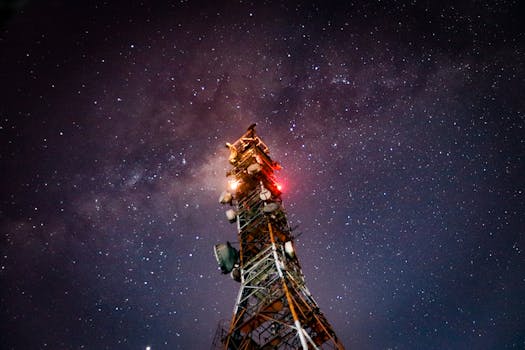
MEO Satellites: Revolutionizing Global Communications with Medium Earth Orbit Technology
MEO satellites, or Medium Earth Orbit satellites, are a type of satellite that operates in an intermediate orbit, approximately 2,000 to 36,000 kilometers above the Earth’s surface. This orbit is higher than Low Earth Orbit (LEO) satellites but lower than Geostationary Orbit (GEO) satellites. MEO satellites are revolutionizing the way we communicate globally, offering faster and more reliable connections than traditional GEO satellites.
MEO satellites have several advantages over GEO satellites. They have a lower latency, which means that the time it takes for a signal to travel from the Earth to the satellite and back is reduced. This results in faster and more responsive communications. MEO satellites also have a wider coverage area, allowing them to provide services to a larger portion of the Earth’s surface. Additionally, MEO satellites are less prone to interference from other satellites and terrestrial systems, making them more reliable.
How MEO Satellites Work
MEO satellites work by transmitting and receiving signals to and from Earth-based stations. They use a combination of antennas and transponders to amplify and re-transmit the signals. The satellites are equipped with onboard processing systems that allow them to switch and route signals to different destinations. MEO satellites can provide a range of services, including broadband internet, telecommunications, and navigation.
MEO satellites are used in a variety of applications, including satellite communications, navigation, and Earth observation. They are particularly useful for providing broadband internet services to remote and underserved areas, where traditional fiber-optic connections are not available. MEO satellites can also be used for disaster recovery and emergency response, providing critical communications services when traditional infrastructure is damaged or destroyed.
Benefits of MEO Satellites
The benefits of MEO satellites are numerous. They offer faster and more reliable connections than traditional GEO satellites, making them ideal for applications that require low latency and high throughput. MEO satellites are also more cost-effective than launching multiple LEO satellites, which are often used for similar applications. Additionally, MEO satellites can provide a higher level of security and encryption, making them more suitable for sensitive and secure communications.
MEO satellites are also more environmentally friendly than traditional satellite systems. They require less power to operate and can be designed to be more fuel-efficient, reducing the amount of waste and debris in Earth’s orbit. Furthermore, MEO satellites can be used to support a range of sustainable development goals, including providing access to education, healthcare, and financial services to remote and underserved communities.
Challenges and Future Developments
Despite the many benefits of MEO satellites, there are still several challenges that need to be addressed. One of the main challenges is the high cost of launching and operating MEO satellites. Additionally, there is a need for more advanced technologies to support the development of MEO satellites, including more efficient propulsion systems and advanced materials.
However, the future of MEO satellites looks promising. There are several new technologies and innovations being developed, including advanced propulsion systems, more efficient solar panels, and new materials. These advancements will enable the development of more capable and cost-effective MEO satellites, which will further revolutionize the way we communicate globally.
In conclusion, MEO satellites are transforming the way we communicate globally, offering faster and more reliable connections than traditional GEO satellites. With their lower latency, wider coverage area, and higher level of security, MEO satellites are ideal for a range of applications, including satellite communications, navigation, and Earth observation. As technology continues to evolve, we can expect to see even more innovative and capable MEO satellites, further supporting the development of a more connected and sustainable world.
